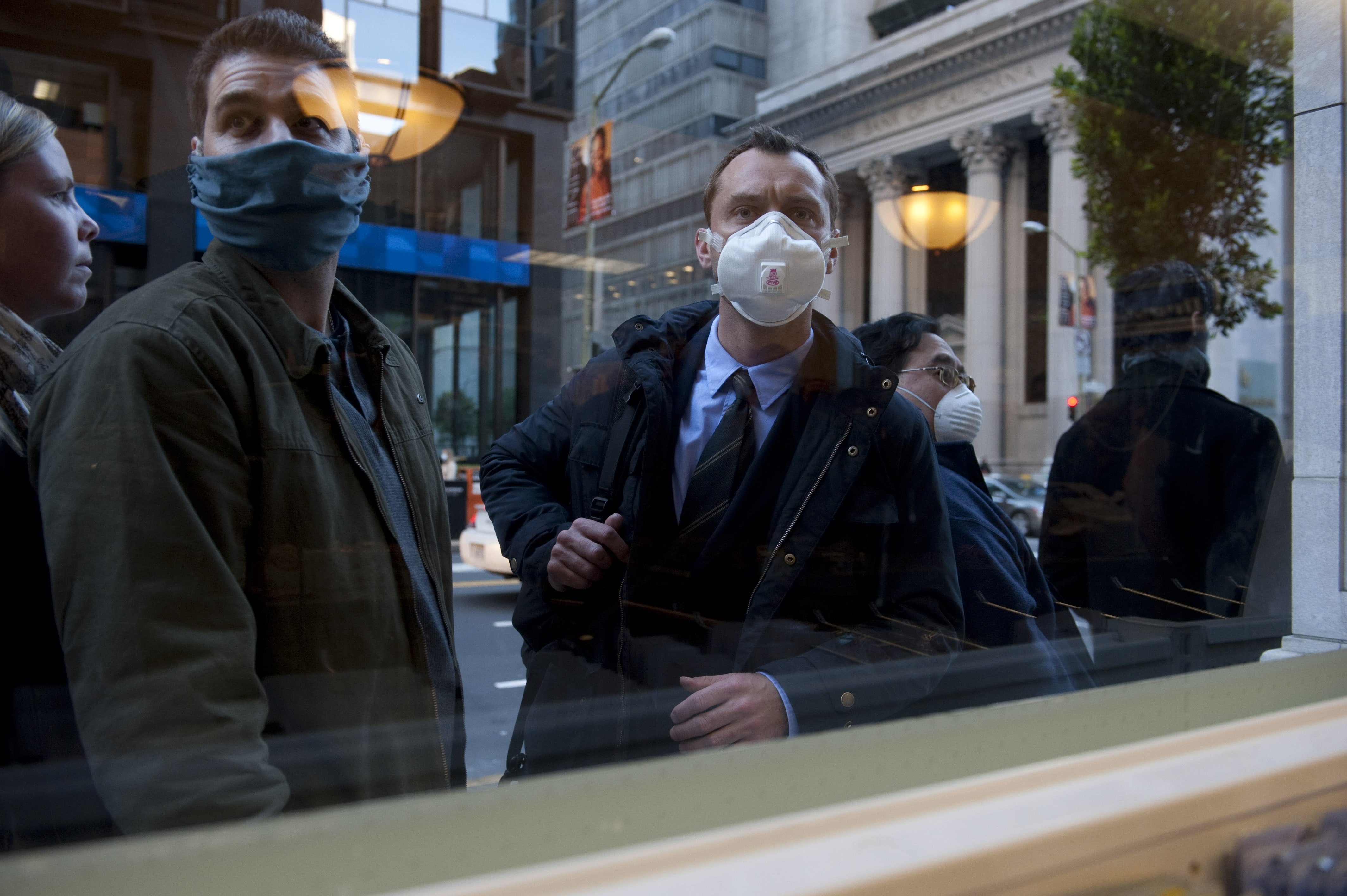Table of Contents Show
As 2020 comes to a close, it seems increasingly likely that the past nine or so months of intermittent stay-at-home orders may have allowed you to exhaust much of your pre-pandemic movie watchlists. It’s even more likely that you’ve spent some portion of that time either viewing some pandemic-centered narratives to try and flesh out for yourself just how well our society has stacked up to our cinematic counterparts, or you’ve been vigorously avoiding the topic altogether. If the former is the case, likely, one of those movies you’ve watched or at least heard of is Contagion.
Way back in late January, as early reports of the novel coronavirus began to break in the mainstream media, Contagion surged back into the top ten slot on the iTunes movie rental chart (( Wilkinson, Alissa. “The 2011 Film Contagion Is Even More Relevant in 2020, and Not Just Because of Coronavirus,” February 4, 2020. https://www.vox.com/2020/2/4/21120178/contagion-movie-coronavirus-itunes-fake-news. )). Positioning it just below some of the previous years’ biggest blockbusters like The Joker and Parasite. However, the idea of a Contagion-level viral outbreak still seemed like it could only exist as a horrifying work of fiction, as the outbreak had seemingly been “contained.”
February saw interest in the film beginning to lull, but by mid-March, Contagion saw 300% higher search volume on Google than it did when it premiered back in 2011 (( Google Trends, 2004-2020 )). This came as the first wave of lockdowns began to sweep across parts of the U.S., and like the worst of our fictional fears began to manifest as reality in the States. Now, roughly nine months into the U.S.’s stint with the pandemic, we have lived long enough to see much of the film’s uncanny and surreal predictions come to fruition. So given the film’s resurgence into pop culture and its strong resemblance to the current state of the world, Contagion stands as a useful metric by which we can better understand just how well we’ve handled this pandemic and what could have been done better.
Contagion: An Attention To Detail
It’s important to note that what sets Contagion apart from an arguably over-saturated and over-embellished genre is its commitment to scientific accuracy and detail. Director Steven Soderbergh and writer Scott Z. Burns worked directly with Columbia University’s Center for Infection and Immunity Ian Lipkin and incorporated input from dozens of scientists and healthcare professional (( Woodward, A. “ Contagion’ is one of the most popular thrillers on iTunes because of the coronavirus outbreak. Here’s how the film compares to reality.” Business Insider. 28 Feb. 2020. )). The film’s fictional MEV-1 virus is based on the real-life Nipah virus, which bears all the same characteristics as its real-life counterpart with a few exceptions; some liberties are taken with its point of origin and incubation period.
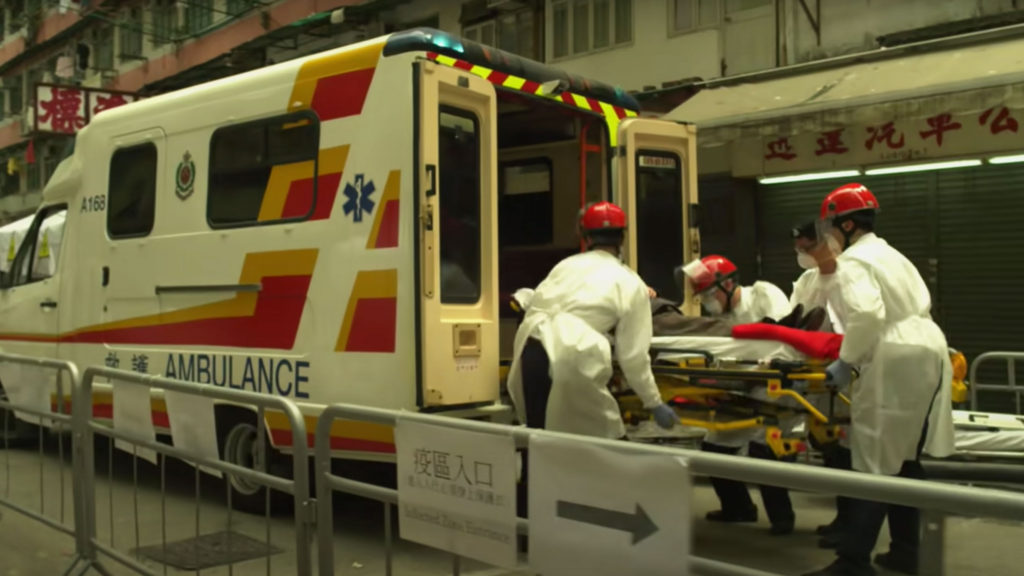
In fact, what seems to have so many viewers and reviewers astonished by the film are the many striking similarities between MEV-1 and Covid-19. Both viruses are zoonotic, meaning that they started in animals, crossed over into humans, and similarly made this jump to humans from contaminated meat in Chinese meat markets. They are also highly contagious and spread through the respiratory system and on surfaces. Infection rates are similar as one person is likely to infect two to four other people.
The two major differences between MEV-1 and Covid-19 are the incubation period and case fatality rate (CFR), the percentage of fatalities expected per number of cases. According to the CDC, Covid-19 currently has an incubation period between 2-14 days and a wide-ranging CFR between 0.3 and 9% in first-world nations. It’s hard to pin down a standard rate since CFRs vary based on context (e.g., the stage of the outbreak, level of testing, economic differences, general health of the population, etc.)
For the far deadlier MEV-1, that period is two days with a CFR range of 25%-40% across the board, meaning that at least one in four people infected with the virus will die (( Jacobs, Gregory, Michael Shamberg, Stacey Sher, and Scott Z. Burns. Contagion. United States: Warner Bros., 2011. )). Without getting too much more into the technical aspects, we should simply count ourselves lucky that we aren’t facing an outbreak of MEV-1.
Articulating A Growing Anxiety
Besides the commitment to scientific accuracy, perhaps the film’s second greatest success is found in the ways in which it conveys a growing sense of anxiety through its cinematography and score. The persistent use of the medium to extreme close-ups on characters combined with a heart-pounding, foreboding score does an exceptional job of instilling a sense of escalating unease and the newfound vulnerability one begins to feel in public spaces as the virus begins to spread. So much of the film is shot in such a tight frame that you can see the actors’ pores and individual beads of sweat running down their increasingly sickly looking faces.
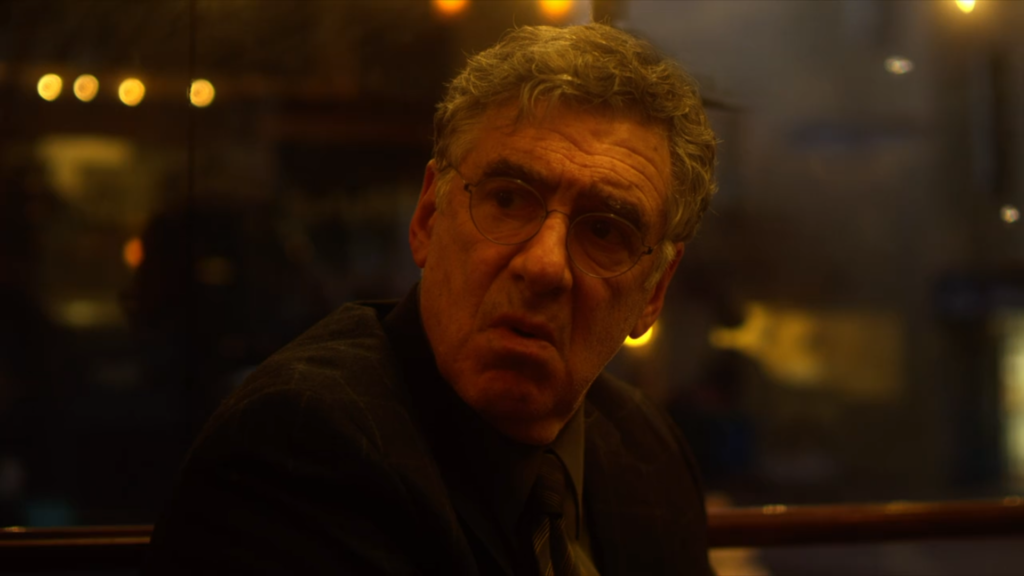
We see an example of these techniques in the scene in which Dr. Ian Sussman sits in a cafe while contemplating whether or not to destroy an MEV-1 sample after the CDC directed him to do so. As he weighs his options, he notices a woman coughing and then touching a glass. The camera then intercuts between several extreme closeups of other patrons looking sickly and touching other objects and surfaces. These images, combined with an increasingly concerned looking Dr. Sussman and some intense background music, marks a quintessential motif repeated throughout later parts of the film.
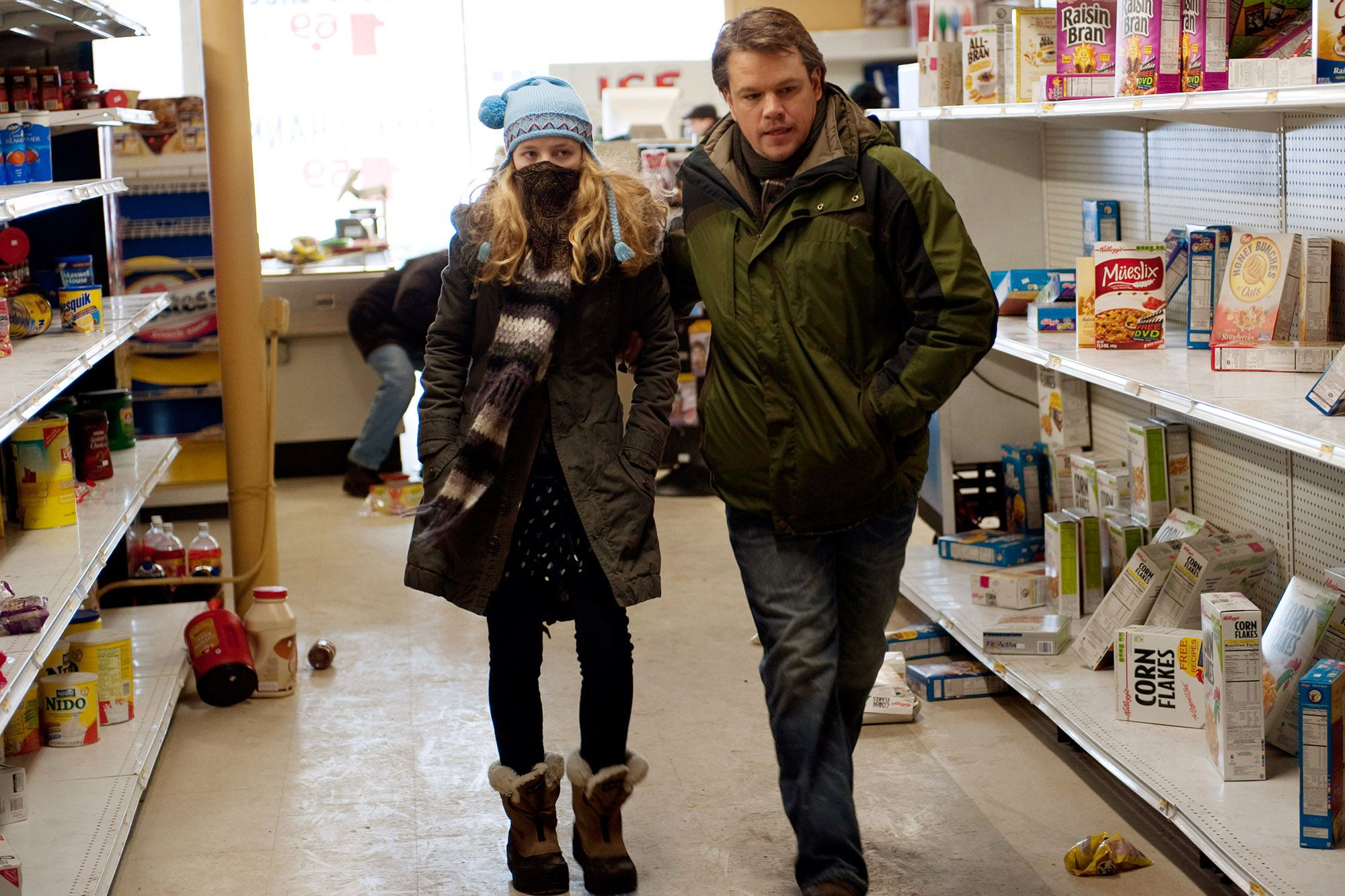
Particularly when public health officials use the casino floor security footage to try and locate patient zero or as patrons wait in line at a pharmacy before all hell breaks loose. In any subsequent case, we are either hit with a barrage of cuts to someone coughing then touching a glass, turning a doorknob, or touching their face and then shaking another’s hand. Similarly, we follow characters very closely as they move through a space and linger just long enough on the door closing behind them to be left wondering if that was an instance of transference. These otherwise mundane scenes re-enacted hundreds of times a day, often without a second thought, take on a new and potentially deadly meaning both in the film and now in our lives.
Eerie Similarities To Reality
Watching this brought me back to the first time I went to a grocery store and saw a sign outside, limiting the number of people who could be inside at once. As I coasted up and down the barren store aisles, I heard a cough in the distance. I searched around suspiciously before making eye contact with another shopper acting similarly. We gave one another a nervous glance as I gestured my head towards the suspected culprit closing a freezer door.
As humorous as this interaction was, the initial shock I felt at how genuinely afraid I was of coming into contact with the cougher surprised me. Even more so, to have that fear validated by another stranger was equally jarring. Now, several months on, I find myself jumping back and forth between intense periods of anxiety and not really thinking about it at all. That aside, Probably the most useful point of comparison the film gives us is the difference in response between our own society and that of the diegesis.
Global, Federal, and Public Response
In the film and our own world, the WHO became aware of the outbreaks in a matter of days. Similarly, widespread coordination between nations was briefly hindered by a lack of transparency from the Chinese government. The diegetic WHO is still notified of the novel outbreak risk within a mere five days and immediately begin treating it as a global pandemic. While the real WHO was aware of Covid-19 early on, it wasn’t declared a pandemic until late March, several months after first becoming aware of it.
By the twelfth day, the diegetic American government had already begun aggressive containment measures: locking down individual states by suspending all commercial air travel and closing all non-essential businesses. Within a month, the President instituted a national curfew and the standard practice of social distancing. Obviously, such severe tactics were not taken so early on in the United State’s response to Covid-19, and on a Federal level still haven’t even come close. In fact, there was a strong attempt by federal officials to downplay the severity of the outbreak and a reluctance to institute any universal health measures even up until now. However, countries like China, Italy, and Spain did institute very strict and swift lockdowns like those depicted in the film.
In February, a Youtube Video by The Atlantic made the rounds on Italian citizens’ social media in the first wave of lockdown, warning Americans that we were only a few days behind them. A thought was, “That couldn’t possibly happen here; Americans wouldn’t respond very well to being told where they could or couldn’t go.” I suppose I was only half right, given that California became the first state to issue stay-at-home orders nine days later. During that same timeframe in the film, the rapidly spreading MEV-1 killed some twenty-six million and infected millions more. MEV-1’s relatively high fatality rate, compared to Covid-19’s, is likely what led many parts of civil society to start to break down so early on in the film. Throughout, we see trash piled high in the streets, emergency services with exceptionally long response times, and even the more affluent suburbs had to grapple with food insecurity.
Although our real-world government may have been slow to act, we were far more successful at maintaining civil society than our cinematic counterparts. However, that’s likely due to the fact that we didn’t have to deal with a disease as disruptive and deadly as MEV-1. This does not account for the summer’s civil unrest related to the Black Lives Matter movement against Police Brutality. Additionally, while protests were featured in the film, they seem to have largely resulted from anti-lockdown misinformation and calls for humanitarian aid.
Misinformation + Resistance
Contagion does a great job at portraying how much misinformation and conspiracy theories go hand and hand with a pandemic. However, it seemed to heavily underestimate the number of dissenting voices and the degree to which their misinformation would inform a fierce global resistance to public health measures. In the film, freelance journalist and online conspiracy theorist Alan Krumwiede is the sole embodiment and major producer of misinformation.
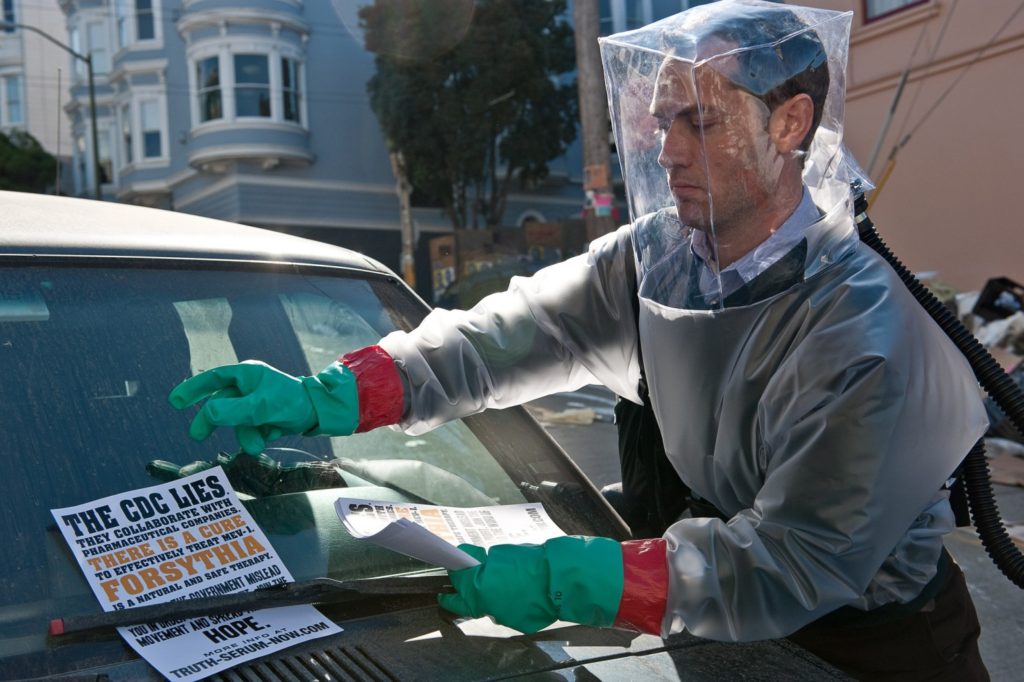
Alan accuses health officials of being in bed with big-pharma and suppressing the effectiveness of a miracle cure called Forsythia, which is later disproven. This sounds awfully reminiscent of early appraisals made to Remdesivir and Hydroxychloroquine’s drugs by real-life political figures, including President Donald Trump.
The film assumed a fairly unified response from the federal and state governments but couldn’t have possibly accounted for the degree to which ultranationalist and isolationist policies would dominate the American political landscape, and to a lesser extent, other first-world nations like the United Kingdom, Germany, etc. This is especially the case here in the increasingly polarized United States, where many far-right news outlets have found a voice in the mainstream. A voice often validated by some far-right political commentators, President Trump, his cult-like base, and other politicians eager to please them.
How Have We Stacked Up?
Overall, Contagion’s characterization of the international community’s response to a pandemic is at least par with, if not much more aggressive than, the response we see to Covid-19. However, the film seems to have particularly overestimated the American government’s speed and level of response while also underestimating its ability to maintain a civil society. In the film, we see widespread civil unrest in the US by the end of week three, and it’s unclear how realistic this really is. However, widespread unrest did occur over the summer, which was largely due to external social justice movements in the Wake of the police shooting of George Floyd and not directly related to the pandemic.
In the film, however, the MEV-1 virus was some three times as deadly and spread at a much faster rate, so this is a probable cause for the accelerated state of social decay. While it paid great attention to detail, Contagion took a few unrealistic liberties that I’m sure many of us wish we could have taken advantage of. Most notably, the development of a working vaccine within a matter of weeks and its distribution only 130 days after the MEV-1 pandemic began. As of the writing of this article in December 2020, the first rounds of vaccines have just begun to be given out in the United Kingdom, some 300 days since the pandemic began. An effort to vaccinate the entire population should stretch out for over the next year or two (( World Health Organization “Listings of WHO’s Response to COVID-19.” World Health Organization. World Health Organization, September 9, 2020. )).
At its worst, Contagion takes a few shortcuts to gun up the drama with a scarier and perhaps unrealistically fast spread of the outbreak and to deliver a satisfying ending. At its best, it serves as a powerful reminder of how much worse off we could have been if Covid-19 was any deadlier and how well a scientifically informed society should have responded. On its most basic level, Contagion serves as a needed reminder for the public’s ability to trust health officials and scientifically informed reason.
